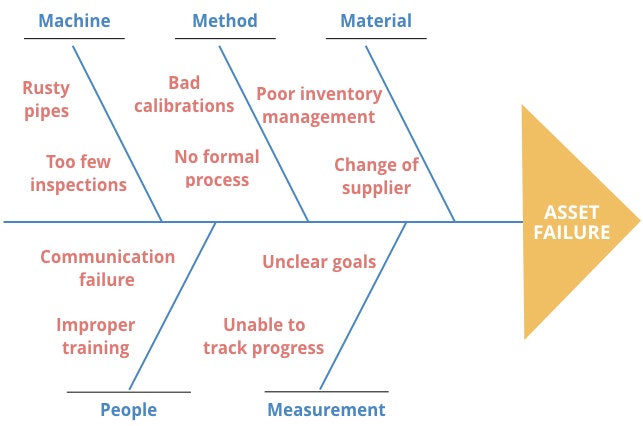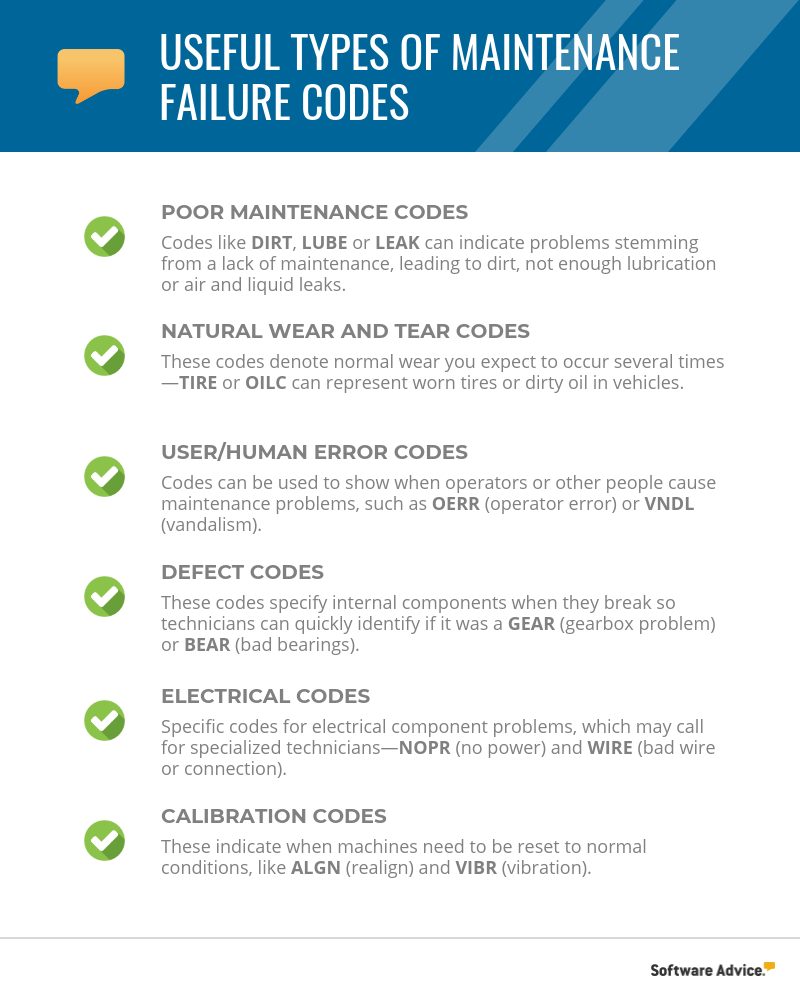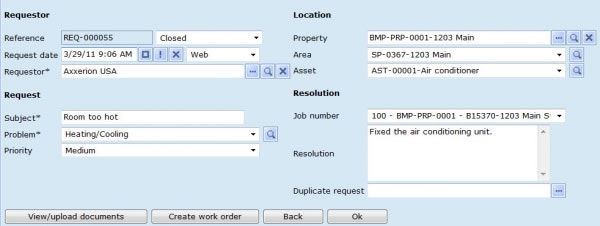Work Order Management Best Practices: Add Failure Codes to Optimize Repairs
After hundreds of hours of maintenance work, technicians gain an innate sense of how machines break down. This valuable experience makes them a maintenance MVP.
What if you could clone this person a dozen times? Each copy would have the same knowledge about failures, and repairs could be completed with a focus on extending life cycles.
Since cloning remains in the realm of science fiction, failure codes help you get closer to that ideal workforce.
Including standardized failure codes on CMMS work orders gives all your maintenance technicians a shared and trusted knowledge base to use for consistent repairs, saving thousands of dollars in unexpected failures.
In this article, we’ll cover some methods to determine failure modes, how to turn them into codes and optimize work orders.
Here’s what we’ll cover:
Identify Failure Modes With Analysis Tools
Include Failure Mode Components on Work Orders
Optimize Work Orders With These Next Steps
Identify Failure Modes With Analysis Tools
Maintenance teams can use a few methods to figure out the root cause of failures. We cover these concepts in detail in another article, but here they are, in brief:
Failure Mode and Effects Analysis (FMEA)
FMEA asks you to rate the likelihood, severity and detectability of failures, then prioritize corrective actions based on how they impact your operations using Risk Priority Numbers (RPN).
When to use FMEA: It’s best to use this method when your company is implementing a new process with new equipment.
5 Whys
This simple concept is a good starting point when you’ve identified a specific type of failure on one of your machines. Asking “why” multiple times and creating a fishbone diagram helps eliminate unrelated symptoms.
Example of a Fishbone Diagram

A fishbone diagram used with a 5 Whys analysis helps maintenance teams narrow down a root cause of failure when there could be several causes.
When to use 5 Whys: Use this method when you’ve first noticed a failure and need to quickly simplify a complex analysis. It’s also useful when human error is suspected.
Fault Tree Analysis (FTA)
FTA is a good choice for identifying causes of failures in more complex machines or systems. Boolean logic helps to show relationships between symptoms and true root causes.
When to use FTA: When it’s likely that several factors contribute to a failure, an FTA can help you map out a handful of problems and address them individually.
Include Failure Mode Components on Work Orders
After performing failure mode analysis on your most critical machines, you have a valuable resource to help technicians complete work orders more accurately. There are several good reasons to integrate this information with your work order system:
During repairs or inspections, technicians can view similar failure modes from other machines so corrective actions remain consistent.
Specific instructions shorten the time to complete a task and reduce labor costs.
Failure mode details give workers a more holistic view of asset problems, which they can use to improve maintenance strategies over time.
Here are the failure mode components to include on work orders:
Failure Codes
When you determine failure modes, you can create a library of failure codes, which allow technicians to quickly understand the problem and any associated actions that have proven to be effective.
There are several ways to create these—letter abbreviations, number codes or a mix of both—and there’s no wrong way to do so, as long as they are simple enough to understand by all of your employees.

Bear this in mind: If you create a list of over 50 codes, your technicians are less likely to accurately use them to describe problems, and others are less likely to perform repairs properly. Slowly roll out codes that correspond to failures in critical assets first, and more can be added as failure modes are more clearly understood.
Root Causes and Solutions
With failure modes identified and codes created to cover most types of maintenance issues, you can derive root causes and recommended actions to take.
These root causes will take time to uncover for newer machines, but you should have a good idea already for assets you have more experience with.


Axxerion CMMS users can add problem codes and assign a priority when creating work orders (Source)
Most maintenance management systems and dedicated preventive maintenance software offer fields to specify the type of problem or failure, as well as open fields for detailed repair instructions.
Vendors can often customize these fields so the work order view only presents the information technicians need to complete work, leading to simpler, quicker job completions.
Keep in mind the definitions for each of these components. Symptoms and causes can sometimes be confused. Create the following fields in your work orders:
Work Order Fields
Failure Code | Represents the symptom observed on a particular asset |
Root Cause | Isolated cause leading to the failure |
Solution | Recommended action that directly addresses root cause |
Example of Failure Components on Work Order
Failure Code: CORR (Seal on steam boiler 2 is corroded)
Root Cause: Small water leak near seal caused rust to form
Solution:
Shut down boiler
Inspect for leaks and repair connections around seal
Replace seal if defective
You may find later that the root causes go deeper—for example, during repairs, you may look at past work performed on the boiler and find that the past two scheduled inspections were missed.
In this case, the problem could be prevented in the future by adding additional training or improved work order notifications to the solution.
Optimize Work Orders With These Next Steps
When you leverage available maintenance knowledge and data, repairs are more accurate and consistent. It makes work simpler for your workers and makes your data easy to analyze, which can avoid future issues.
To recap, take these steps to establish a sustainable and evolving failure code system:
Choose one or a combination of the failure analysis methods.
Analyze historical repair records and hands-on experience to identify root causes.
Create less than 30 failure codes to describe the symptoms for your critical assets.
Implement failure codes into your CMMS or EAM work orders.
Establish annual reviews to add, remove or edit codes as needed.
If step four slows you down, it’s time to review the preventive maintenance software market and find a supportive vendor and a product that is easily customizable. Our product listings include more than 120 products and real user reviews.
If you want help narrowing down the best options, call our maintenance software advisors at (855) 220-0546 for a free consultation to save you time on your search.